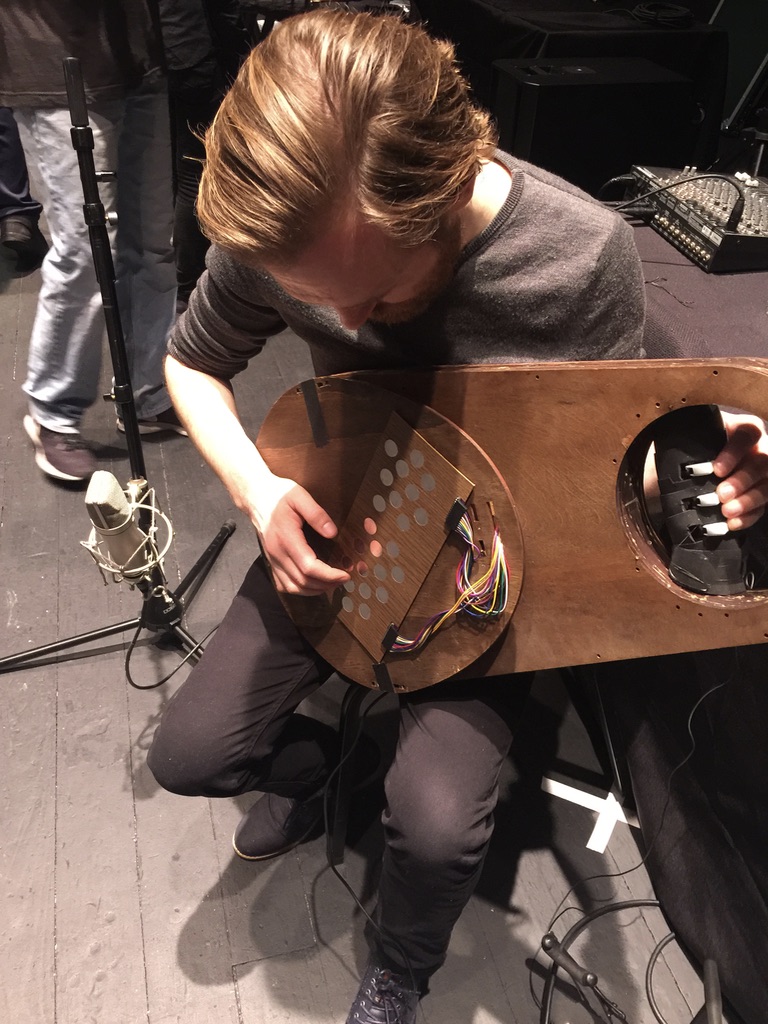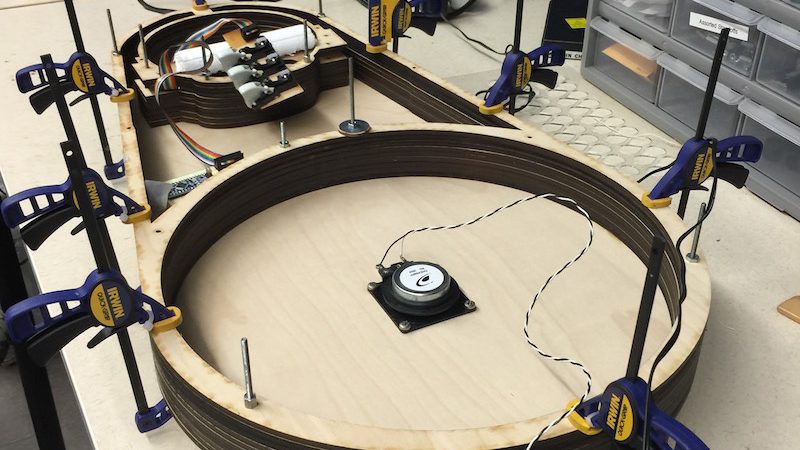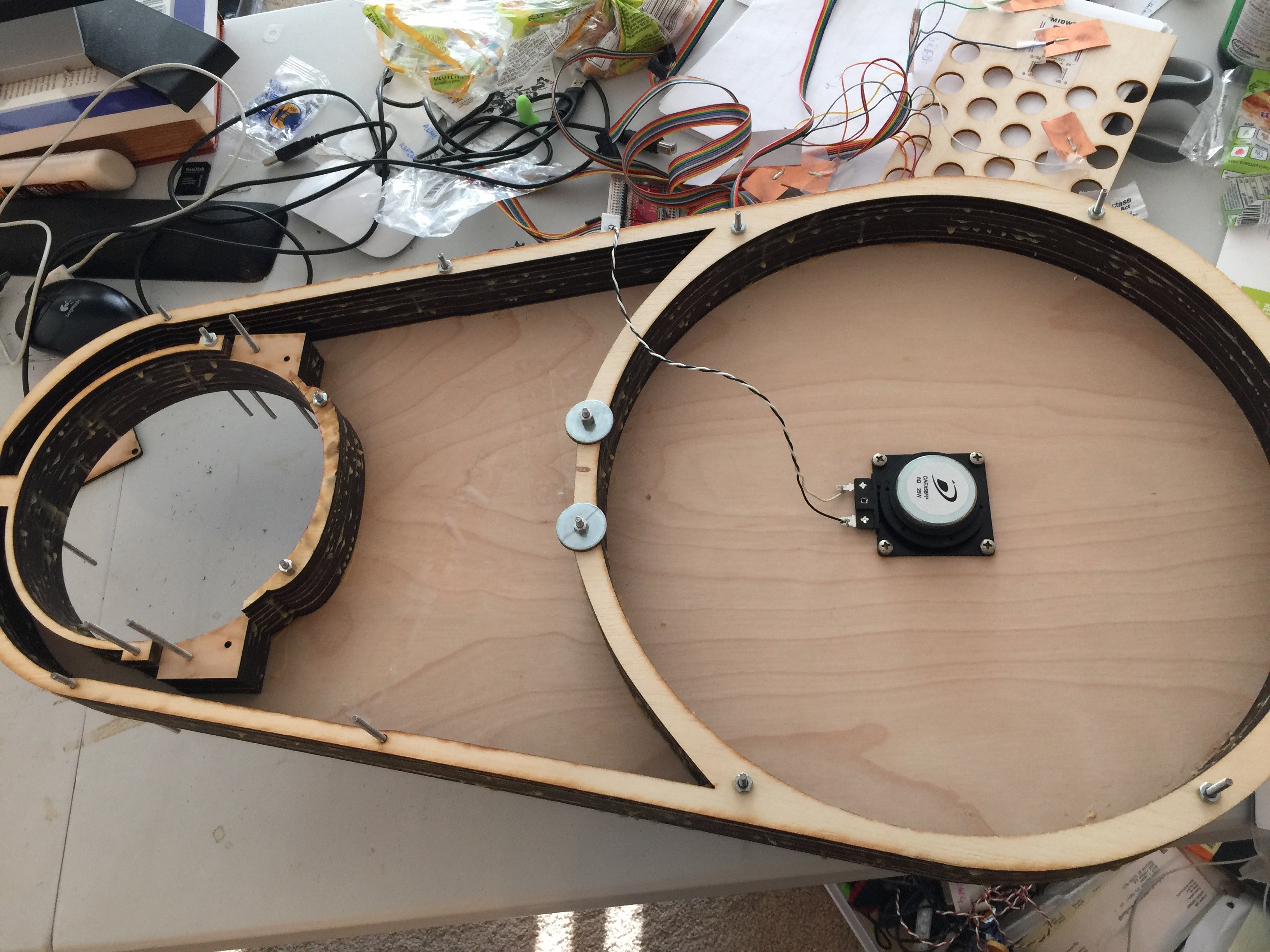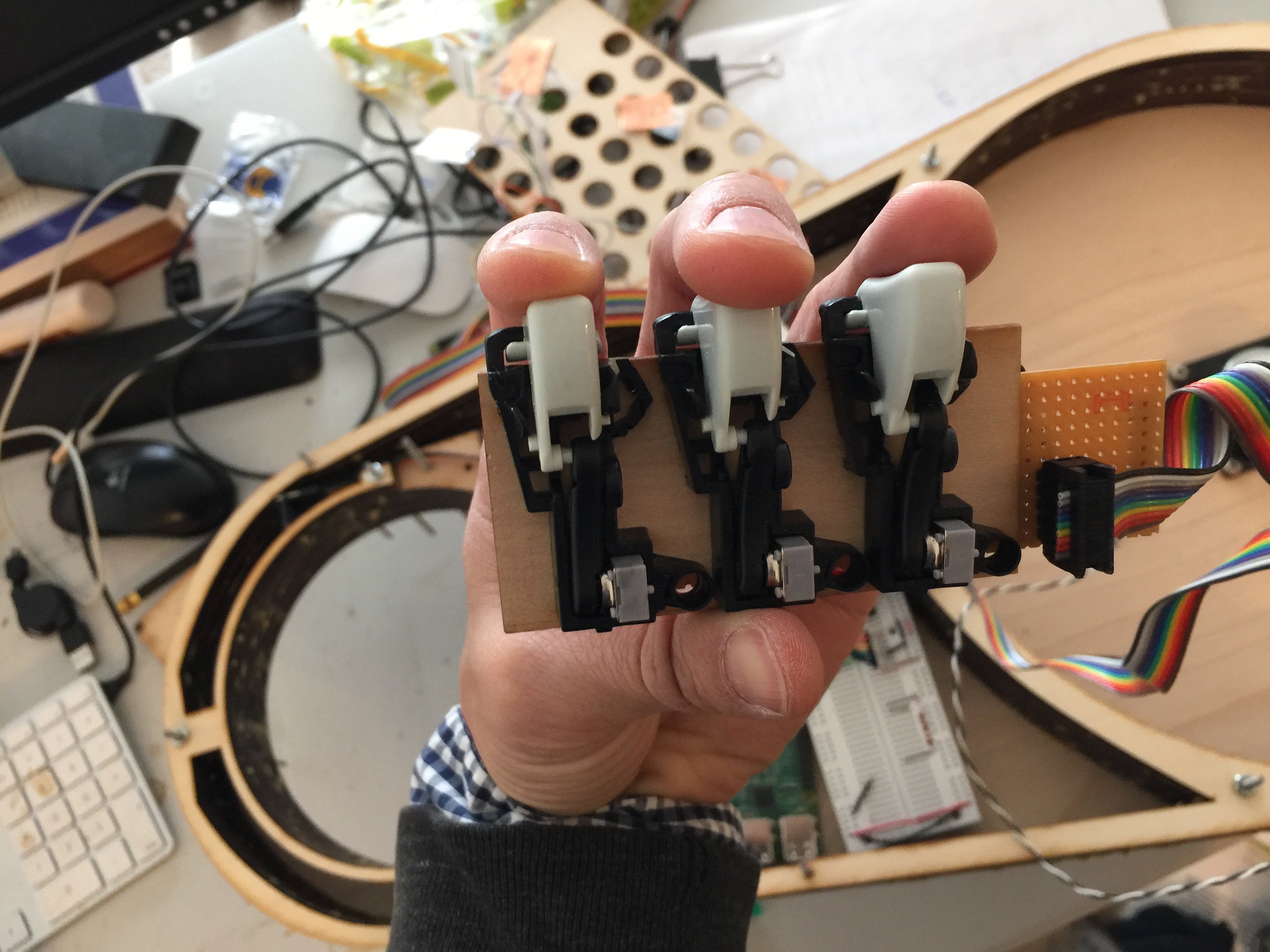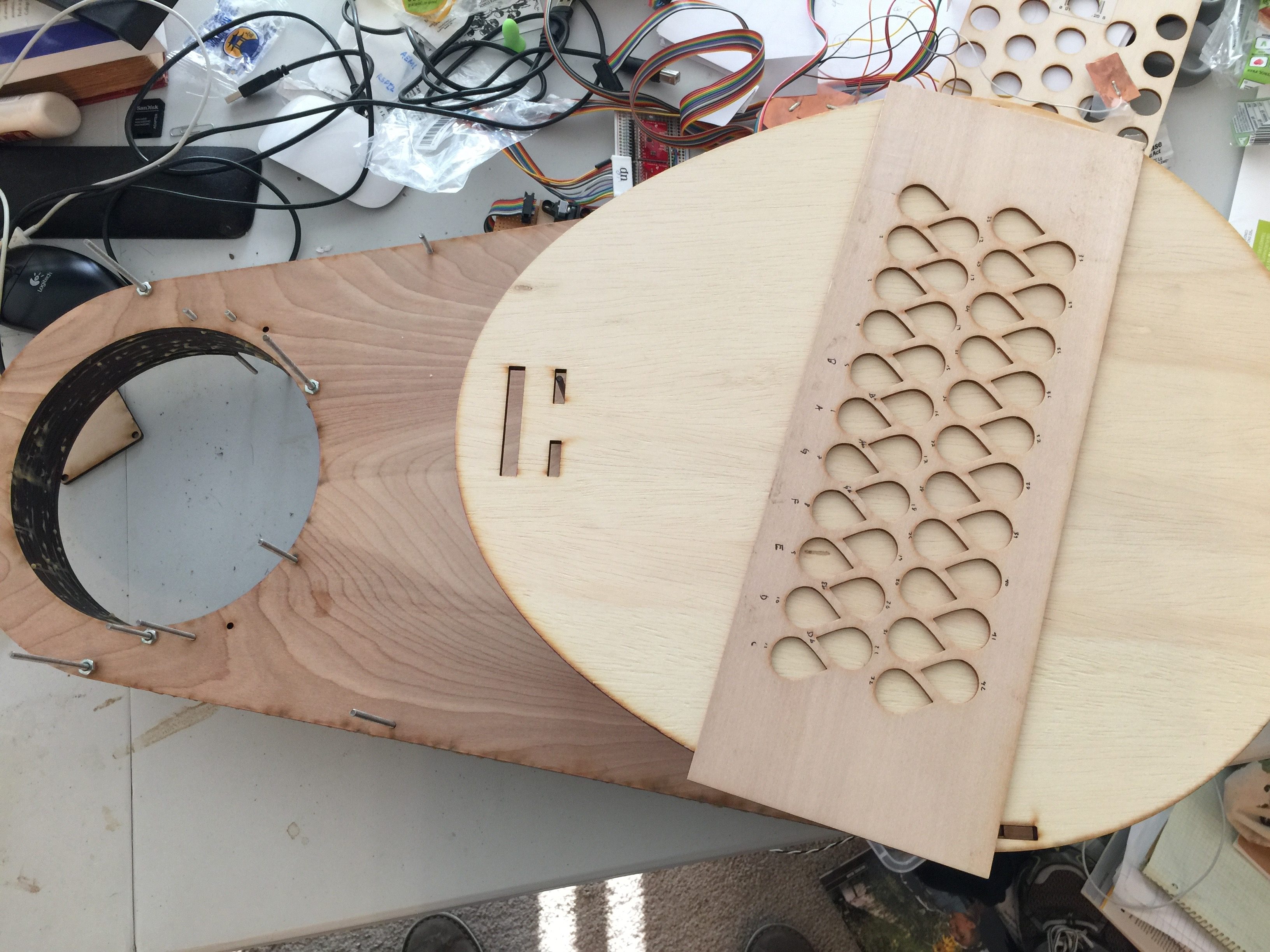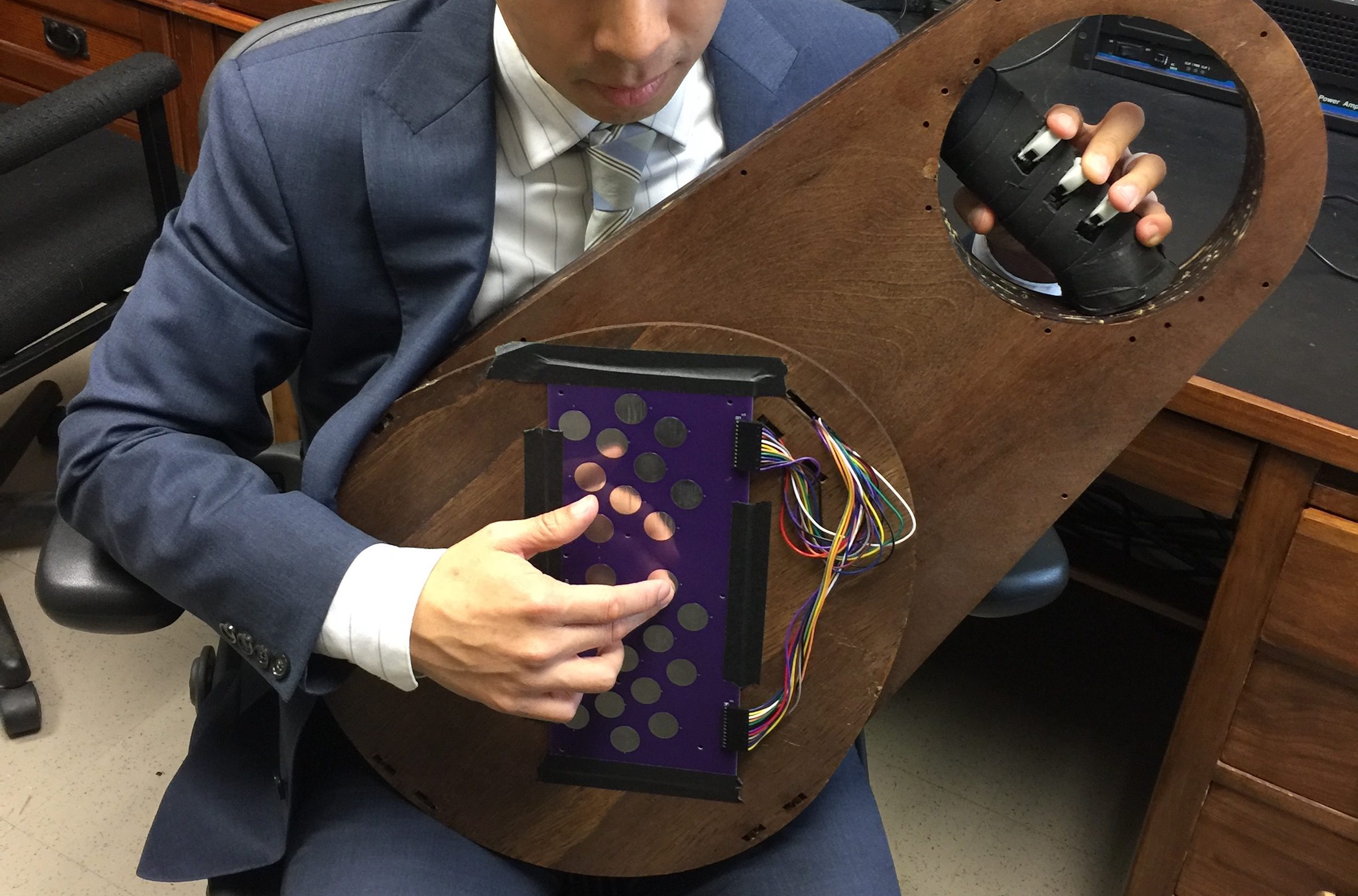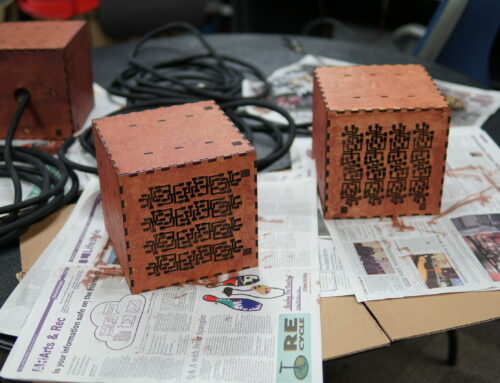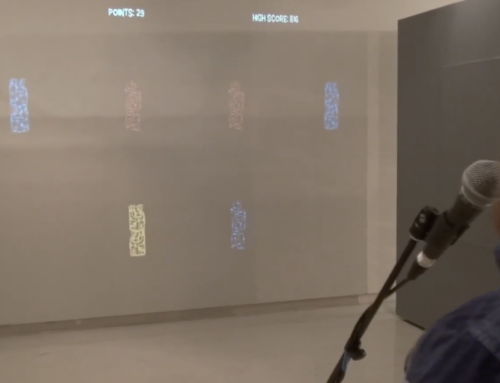Project Description
AEMI – the actuated embedded musical instrument is a wooden resonant shell driven by two tactile transducers. An internal microcomputer synthesizes sound based on performer input through a capacitive touch fingerboard, three game-style triggers, and an accelerometer.
AEMI is monophonic, in a way idiophonic. It’s pitch range is 2-octaves (24 diatonic keys), from C4 to B5.
Controls
Pitch is selected on the fingerboard. If a second simultaneous touch is detected, AEMI will portamento toward the second pitch.
The three triggers near the top of AEMI control loudness, filtering, and sideband loudness in the synthesis. The maximum of the three triggers determines the loudness. The sum of all three triggers determines the Modulator Index with the SimpleFM synthesis pattern: the greater the MI, the richer the spectrum. In the amount of each individual filter controls the amount of high pass, band pass, and low pass filtering is applied. Each trigger controls one of the filters.
An accelerometer with in AEMI controls the amount of vibrato is applied to the synthesis.
Actuation
Two tactile transducers attached to the front and back body panels of the instrument vibrate the wood. The transducers are driven by the embedded amplifier. Sound synthesis is processed on the embedded Raspberry Pi 2 running PureData and output to the amplifier.
AEMI was a semi-finalist of the 2017 Guthman New Musical Instrument competition.
Chapter two from my dissertation regarding the construction of AEMI
